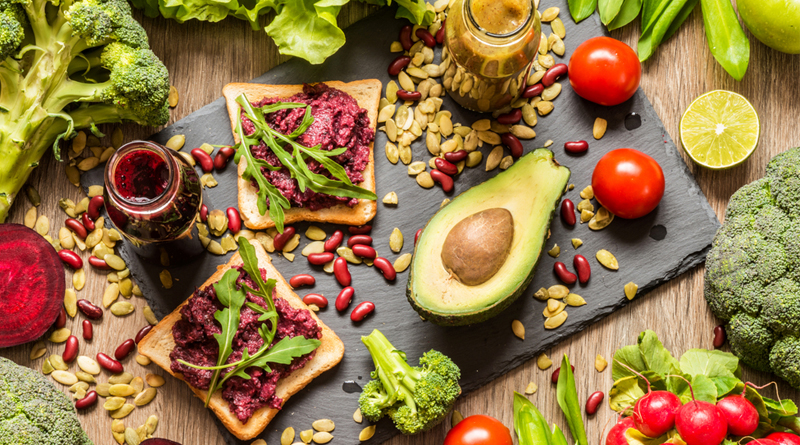Research highlights six proteins with the biggest potential for the industry, with a focus on nutritional beverage applications.
Swiss flavors and fragrances player Givaudan has identified the top six new up-and-coming plant-based proteins that could likely be game-changers for the food industry, and, in particular, nutritional beverages. The proteins identified are oats, mung beans, garbanzo beans, lentils, flax and sunflower seeds, and were unveiled as the results of a research project conducted in collaboration with the University of California Berkeley’s Product Development Programme (UC Berkley).
An overview of the research provided on Givaudan’s website outlines that the US$13.7 billion Global Plant Protein market is expected to grow at 8 percent CAGR to US$13.7 billion by 2021. The flavors specialist further highlights that 57 percent of global consumers are actively seeking protein sources, spurring a 92 percent growth in sales of plant protein products recorded over the last year.
“With an ever-increasing demand for proteins, we asked ourselves if the best proteins are currently being used, and if niche proteins that are in use today could play a bigger role in the future. This forward-thinking research will help our customers to navigate the ever-changing alternative protein landscape,” says Dr. Flavio Garofalo, Global Category Director Savoury Flavours and Natural Ingredients at Givaudan.
The company has been exploring the protein space with UC Berkeley since 2017. As part of this collaboration, the company set the students at the university with the challenge of researching emerging alternative proteins for nutritional beverages to find out which offered the best new opportunities. This involved mapping the landscape, starting with an initial pool of 44 different protein beverage products and 42 unique plant proteins.
Each protein candidate was profiled against a series of filters including commercial viability, protein content, sustainability, allergenicity, flavor and color. Using a process of elimination, based on the key criteria, the students identified the six proteins that they believe have the potential to change the industry.
“Our students have worked closely with Givaudan to profile a broad spectrum of proteins using a range of key filters. We scored the proteins for commercial, nutritional, and sustainability factors and then ranked them for additional health benefits. These attributes make these proteins appealing candidates for new product development. It is undoubtedly an exciting time in the industry and we are pleased to be playing such a pivotal role in its future,” adds Sudhir Joshi, Ph.D., of UC Berkeley.
The full report of the UC Berkeley study offers detailed information on each of the six protein sources, analysing how these proteins rate against a number of criteria such as supply, nutritional value, factors that accelerate use, the protein extraction process, cost, environmental impact, functional properties, taste and color and regulatory approval. The analysis looks particularly at the lower land and water impact of protein production compared to the physical space, pollution and energy requirements needed to raise and care for animal protein sources.
While each of the plant proteins in the report show differences in energy consumption, optimal terrain, irrigation/water availability, fertilizer and weed prevention practices, a common theme is their potential for cultivation across many areas of the world, offering sustainable sourcing and a diversified supply chain. This benefits local economies and provides mitigation against supply disruption from outside factors such as natural disasters and crop failure. These factors are incredibly important in enabling high-quality protein intake and nutrition across the globe in the future, the company notes.
Last week, Givaudan unveiled a selection of holistic masking solutions to counter off-notes across six plant-based proteins: soy, pea, faba, rice, oat, algae and whey. Developed in combination with a new smart masking tool, the solutions were created by conducting over 2,000 evaluations, tried and tested by Givaudan’s expert panel over the past 18 months. The flavor house touts the solutions as highly functioning, enabling suppliers to avoid the cycle of using one ingredient to mask another.
Last May, vegan mung bean-based “eggs” by US food tech startup JUST (previously known as Hampton Creek) launched in China, following rollouts in the North American and European markets.
Notable examples of niche plant proteins entering the market have proliferated in recent months. The vegan market continues to experience buoyant growth as global consumers increasingly push the demand for sustainable and healthy products with robust animal welfare credentials. Last May, vegan mung bean-based “eggs” by US food tech startup JUST (previously known as Hampton Creek) launched in China, following rollouts in the North American and European markets. The plant-based product was innovated to “scramble and taste just like conventional eggs,” while yielding a lower environmental impact.
Also in May, Parabel USA, a producer of plant protein ingredients, announced successful results for its new, patent-pending milk made from water lentils, adding to its rapidly growing portfolio of patents worldwide. “Our lentil milk is similar in color to regular milk and captures the extraordinary, high-quality protein and mineral benefits of water lentils while containing no allergens,” says Peter Sherlock, Parabel’s CTO. “The milk froths and foams effectively. This innovative addition also retains the same high level of sustainability as the rest of our product range.” The plant-based milk market has continued to grow over the years, now accounting for 15 percent of total milk sales in the US, and is set to grow at a double-digit rate over the next few years.
“Striking the balance between functionality, texture, taste, nutrition and cost when working with alternative proteins is difficult to achieve without fully understanding the interactions of all the ingredients in the food or beverage product,” concludes Dr. Flavio Garofalo, Global Category Director Savoury Flavours and Natural Ingredients at Givaudan.
Source: Food Ingredients First










